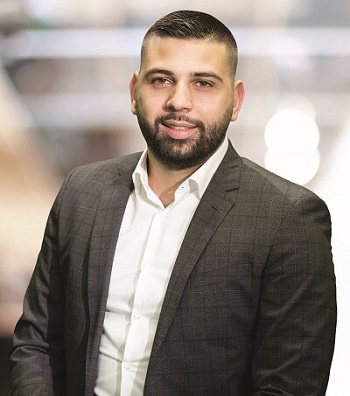In Issue 84's Maritime Host, Sallaum Lines to Double Fleet by 2027
With an ultimate goal to be the partner of choice for all stakeholders, Sallaum Lines, the world’s 10th car carrier operator, prepares for a prosperous future while works are in place to increase the diversity and capacity of its fleet. With plans to double the fleet, the leading provider of RoRo solutions has set a goal to have a fleet of 16 modern LNG DF vessels by 2027. Sami Sallaum, President of Sallaum Lines, talks of plans, challenges and investments, in this issue’s Robban Assafina Maritime Host.
 |
| Sami Sallaum |
With an experience in the shipping industry, how do you see the PCTC market amid many challenges?
The PCTC market has been facing several challenges in recent times. These include the impact of the COVID-19 pandemic on global trade and supply chains, changing regulations on emissions and fuel types, and geopolitical tensions that affect international trade.
Another significant challenge facing the PCTC market is the increasing focus on environmental sustainability. The International Maritime Organization (IMO) has set targets to reduce greenhouse gas emissions from the shipping industry, which has led to a shift towards cleaner fuels and technologies such as LNG and electric propulsion systems. This shift towards cleaner fuels and technologies is likely to continue, which will require significant investments by PCTC operators.
Geopolitical tensions can also affect the PCTC market. Trade tensions between major economies can result in changes in trade flows and demand for PCTCs. Additionally, political instability in certain regions can impact the safety and security of PCTC operations, leading to higher costs and increased risks for operators.
Despite these challenges, the PCTC market is expected to continue to grow over the long term, driven by increasing global trade and demand for new vehicles. To remain competitive, PCTC operators will need to invest in advanced and more environmentally friendly vessels and adapt to changing market conditions.
What is the current fleet size? And what plans regarding fleet development are in mind?
Our fleet consists of 8 vessels, but we have plans to double the fleet and reach 16 modern LNG DF vessels by 2027. The first deliveries on the 7500 CEU LNG DF vessels will be ready in mid-2025.
| Read More: Sallaum Lines Launches Maritime Youth Program on International Day of Education |
Are you looking for new patterns of investments? new markets?
The underlying fundamental demand drivers are looking strong. Vehicle sales are recovering and are expected to witness solid growth, with emerging markets playing a significant role. Supply-side fundamentals are also highly supportive of a strong market moving forward. There has been very limited fleet renewal over the last decade, with almost zero net fleet growth from 2019 to 2023. The increased environmental focus and regulation will drive the need for a significant fleet replacement going forward. It is estimated that there will be a need for approximately 200-250 newbuilds between 2024 and 2030 according to Clarksons Platou.
However, there is a very limited yard capacity available, with delivery slots in 2025.
The current trade routes between Europe and the USA already exist, which present an opportunity for new vessels. Loading from European ports to the USA, followed by loading from the USA to West Africa in a triangle service.

What is the strategy of the company to contribute to the capacity building of potential young generations who might be interested in the shipping industry?
Sallaum Lines can contribute to capacity building for potential young generations interested in the shipping industry by implementing the following programs: Education and Training Programs, Internship and Apprenticeship Programs, Scholarships and Grants, Outreach and Engagement, and Mentorship Programs.
| Read More: Sallaum Terminal receives certificate for green electricity consumption |
What is Sallaum Lines’ near future focus to offer better services?
We believe the best services come along with digitalization, sustainability, customer experience, safety & security and expansion of the fleet to accommodate more sailings.
How do you describe the company’s vision?
Our vision is to be the leading provider of RoRo shipping solutions, providing our customers with the most reliable, efficient, and sustainable shipping solutions. We strive to continuously innovate and invest in our people, processes, and technology to stay ahead and meet the evolving needs of our customers.
We aim to operate with the highest standards of safety, environmental responsibility, and ethical business practices, contributing to the well-being of the communities we serve and the planet we share. Our ultimate goal is to be the partner of choice for all stakeholders and create long-term value for our shareholders by covering the main five pillars: environmental, social, innovation and digitalization, managerial and economic.
Robban Assafina Magazine, Issue 84, March/ April 2023, Maritime Host, pg. 95
| Read Here | |
 |
|



































